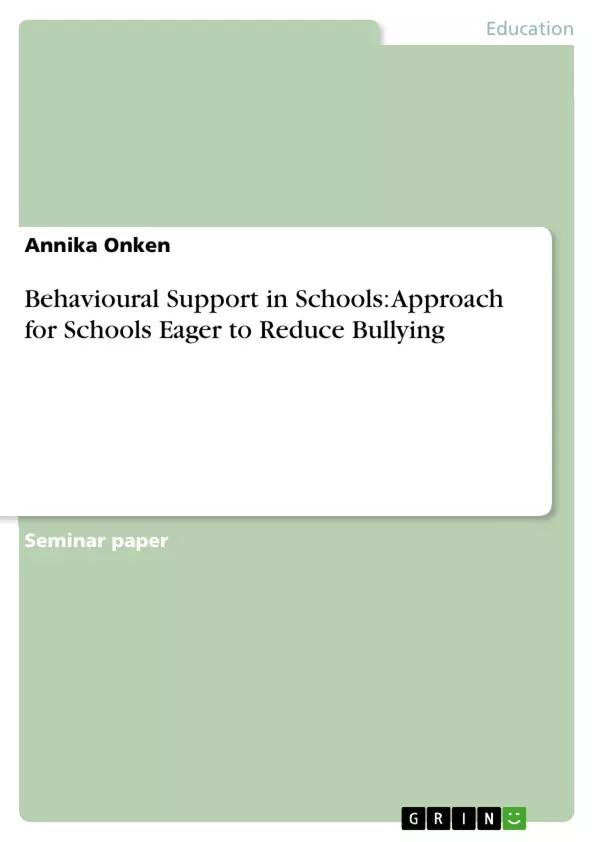The approach I suggest here for schools eager to reduce bullying on the system level constitutes a whole-school approach. Such an approach should inform, obligate and mobilise. In order to reach out to all sections composing the school life that is, students, parents and all staff, and involve those into the approach a school wide policy is needed to proclaim the schools stand on the problem and provide principles and guidelines about how to address the problem. Rigby (2003) suggests that the policy should be “widely disseminated” (p. 28) in order to reach at best everyone involved with the school. Furthermore, parents who are not that fluent in speaking the English language should have access to translated versions of the policy (p. 28). This whole school approach, furthermore, has to be acted out on the group and individual level in order to fulfil its purpose. Teachers can use cooperative learning as a means to reduce bullying by building interpersonal relationships in everyday class. This approach to learning supports the idea of students working together on a shared task in small groups. In contrast to normal group work cooperative learning binds the members of a group together through the task solving process which can only be maintained as a team. This shared responsibility between the team members should be understood as “positive interdependence” (Gillies, 2003, p. 37). To continue the whole school approach on the individual level there are several options for teachers and staff. It should be the main aim to help victims as well as bullies. The “No-Blame Approach” suggested by Rigby and Thomas (2003) can be used to mediate between the two parties by interviewing them separately.
Inhaltsverzeichnis (Table of Contents)
- System Level
- Information
- Obligation
Zielsetzung und Themenschwerpunkte (Objectives and Key Themes)
This document outlines a whole-school approach to reducing bullying, emphasizing a policy that informs, obliges, and mobilizes all members of the school community, including students, parents, and staff. The aim is to establish a school-wide culture that explicitly rejects bullying and proactively promotes a safe and inclusive environment for everyone.
- The Importance of a Comprehensive Anti-Bullying Policy
- The Definition and Recognition of Bullying Behaviors
- The Impact of Bullying on Victims and Bullies
- The Responsibility of Bystanders and the Need for Intervention
- The Role of Parents and Staff in Preventing and Addressing Bullying
Zusammenfassung der Kapitel (Chapter Summaries)
The document initially focuses on the importance of a comprehensive anti-bullying policy that clearly defines bullying and its different forms. It stresses the detrimental effects of bullying on both victims and perpetrators, highlighting the need for a supportive and caring environment for all students. The document further outlines the obligations of students, teachers, and parents in preventing and addressing bullying, emphasizing the need for a proactive approach that includes early intervention and a consistent stance against all forms of bullying.
Schlüsselwörter (Keywords)
This document centers on the themes of anti-bullying policies, school-wide approaches, bullying prevention, and the impact of bullying on individuals and the school community. It explores the different types of bullying, including direct and indirect bullying, cyberbullying, and bullying via mobile phones. Additionally, it emphasizes the roles of teachers, students, and parents in creating a safe and inclusive school environment. The document discusses the need for proactive strategies, early intervention, and consistent support for victims of bullying.
- Citar trabajo
- Annika Onken (Autor), 2009, Behavioural Support in Schools: Approach for Schools Eager to Reduce Bullying, Múnich, GRIN Verlag, https://www.grin.com/document/137955



